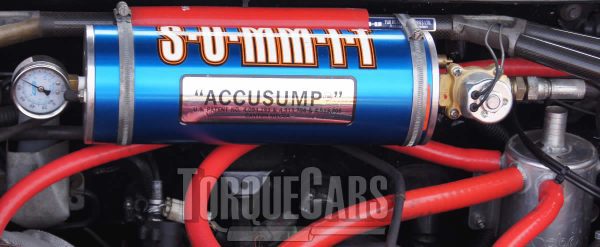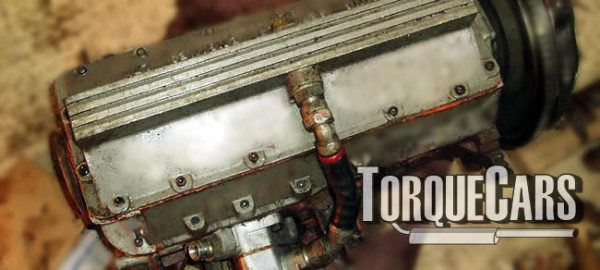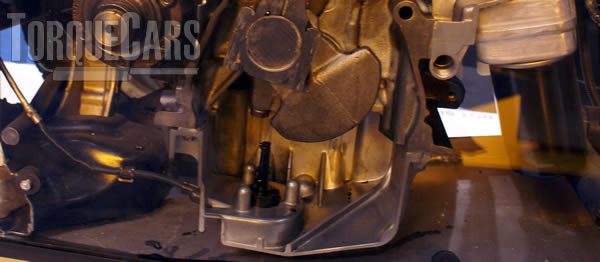Dry Sump
"The Pros and cons of dry sumps."
Proper lubrication of the engine is the single most essential ingredient to an internal combustion engine - without it everything would seize up completely.
It is a factor that is essential in the high performance tuning and racing worlds.
Tuners are looking for engines that provide more horsepower and constantly pushing the engineering boundaries and require efficient lubrication.
Keeping a good flow of cool oil is an essential if you want to maintain reliability and maximize your power output.
What Is a Dry Sump?
A conventional sump is a reservoir at the bottom of the engine from where oil is pumped around the engine.
The dry sump relocates this reservoir and offers more efficient lubrication.
The dry sump engine uses a set of additional pumps, and an extra tank is provided for holding the oil.
The oil is cooled de-aereated and stored in the reservoir where it can be pumped around the engine as required.

You can also implement a dry sump by using a single vacuum that generates positive and negative pressures which help in pulling and pushing the oil in and out of the engine.
In a dry sump engine, a pressure relief valve is required to regulate the negative pressure inside the engine, thereby making sure that the seals will not get inverted.
The engine gets cooled and lubricated by oil circulating inside all its components, feeding bearings and all the other moving parts, before getting drained by gravity to the sump at the engine base.
In all dry sump installations, you will find that the dry sumps are intended mount to mount pressure on the pump which is at the same level as the common shaft.
This means that the pulley in the combustion engine system is capable of running several pumps at the same time.

Standard practice allows a single scavenge pump for each crankcase section.
For V-type engines, an additional scavenge pump is required so as to remove the oil that has been fed into the gear valve.
A typical V8 engine would, therefore, come with a minimum of four scavenge pumps, and a pressure pump situated in the pump stack.
Dry Sump Benefits & Advantages
A dry sump offers many advantages including:
- Increased Oil Capacity (potentially but depending on system design) – the additional reservoir helps increase the amount of oil available at any one given moment.
- A dry sump makes it possible for you to mount your engine at a much lower level, thanks to the low profile of the pump, which in turn helps lower the center of gravity.
- It is possible to move the external reservoir to another part of the car thus improving the overall weight distribution of the car and increasing the oil capacity through the use of a large external tank.
- The dry sump design is not susceptible to oil movement problems that emanate from the high cornering forces (causing the oil pump to run dry where oil would run away from the pickup in a wet sump).
- Scavenge pumps are mounted with their intake at the lowest point in the vehicle engine. Since the oil is being returned by gravity it will naturally flow into the pump intake (rather than having to be sucked up) which avoids any risk of cavitation.
- Oil temps can be regulated more easily with flow adjusted to match the engine temps.
- Replacement and maintenance of the pumps is easy given that they are all mounted externally to the engine.
- Additional cooling of the oil as it is stored away from the hot engine.
- The crank and bottom end components are not splashing through oil which can lose power.
Even though the dry sump comes with many advantages, there are a few dry sump problems that can be expected as well.
Disadvantages of a Dry Sump
These are some of the problems associated with the dry sump.
- It costs a lot of money for you to install and run in your car
- Drive Belt – this refers to both positioning and the kind of impact that it has on the other belts. The dry sump should have a dedicated belt, which is fine with RWD installations, but can be problematic with FWD installations due to lack of space at the crank.
- Extra weight, although the oil catch pan is smaller, you have a pump and all the additional piping and an external reservoir.
- It adds another mechanical point of potential failure so the engine maintenance requirements are higher.
- The pump must be mounted low for better scavenging, and this can be difficult in some car configurations as the low positions are occupied by the driveshaft and the alternator or other engine parts, which means that you may need to move them higher or relocate them.
- The reservoir tank takes up valuable engine bay space.
- The oil lines and pump itself will require maintenance.

Why Convert to a Dry Sump
Even though the dry sump has a few sets of problems, it is still the best performance option compared to the conventional wet sump.
The primary advantage of a dry sump is the fact that it can create more power by generating extra crankcase vacuum with a dry sump pump.
It improves the ring seal and keeps the rotating assembly free of any wind, thus allowing it to spin freely.
The dry sump also comes with increased capacity and remote coolers in addition to consistent and adjustable oil pressure.
The fact that there is no oil in the pan allows it to be shallow, improving weight handling and distribution.
NB: Watch you don’t overfill the tank because some oil will drain into the crankcase overnight.
You have to run the engine (or at least turn it over several times) to allow the scavenge pump(s) to return all oil to the tank before checking the level.
Please Check out my YouTube channel, we're regularly adding new content...
PLEASE HELP: I NEED YOUR DONATIONS TO COVER THE COSTS OF RUNNING THIS SITE AND KEEP IT RUNNING. I do not charge you to access this website and it saves most TorqueCars readers $100's each year - but we are NON PROFIT and not even covering our costs. To keep us running PLEASE Donate here
If you liked this page please share it with your friends, drop a link to it in your favourite forum or use the bookmarking options to save it to your social media profile.
Feedback - What do You Think?
Please use our forums if you wish to ask a tuning question, and please note we do not sell parts or services, we are just an online magazine.
Help us improve, leave a suggestion or tip
Please watch this video and subscribe to my YouTube channel.

 Click to accept YouTube Cookies & Play.
Click to accept YouTube Cookies & Play.